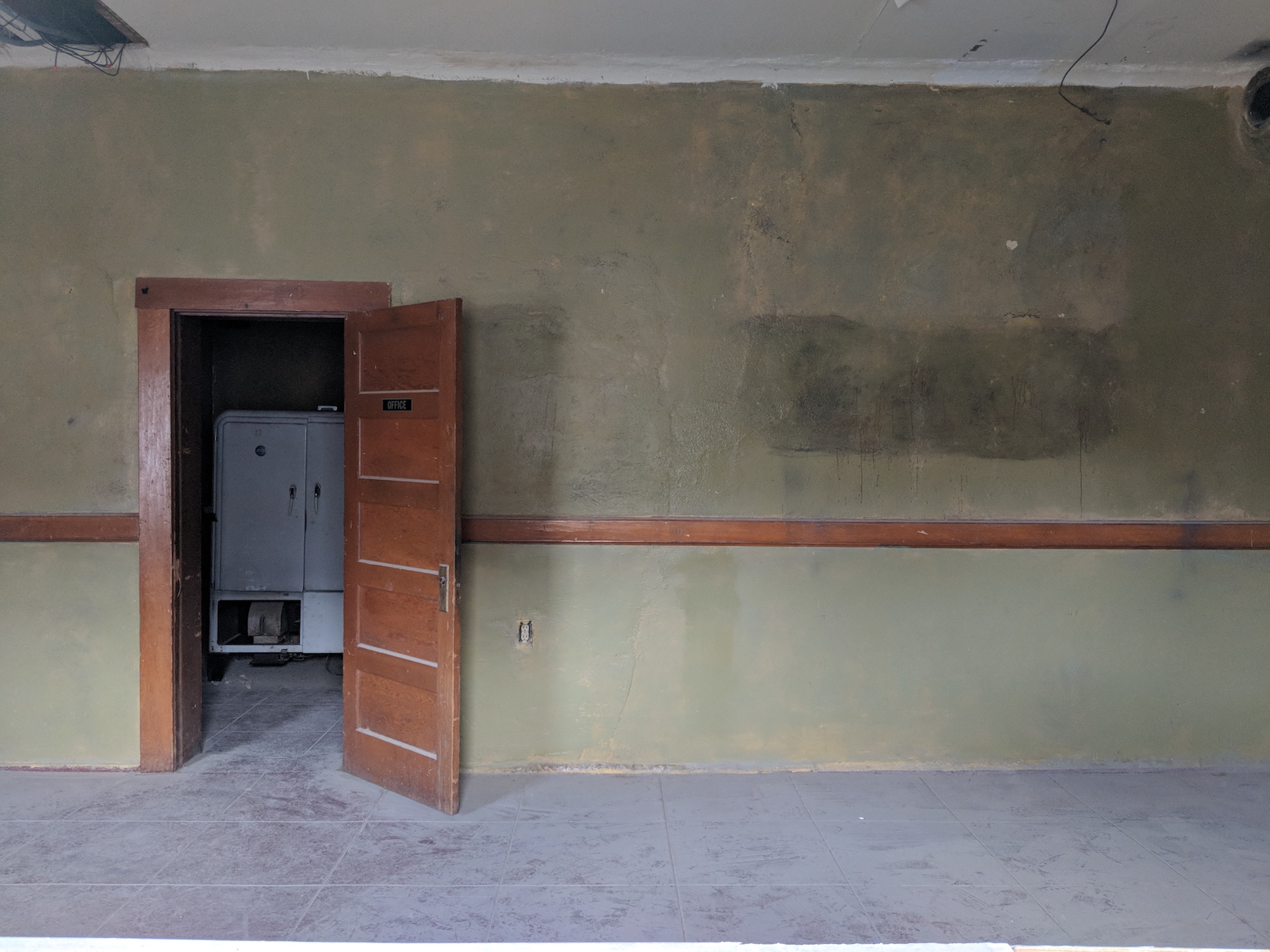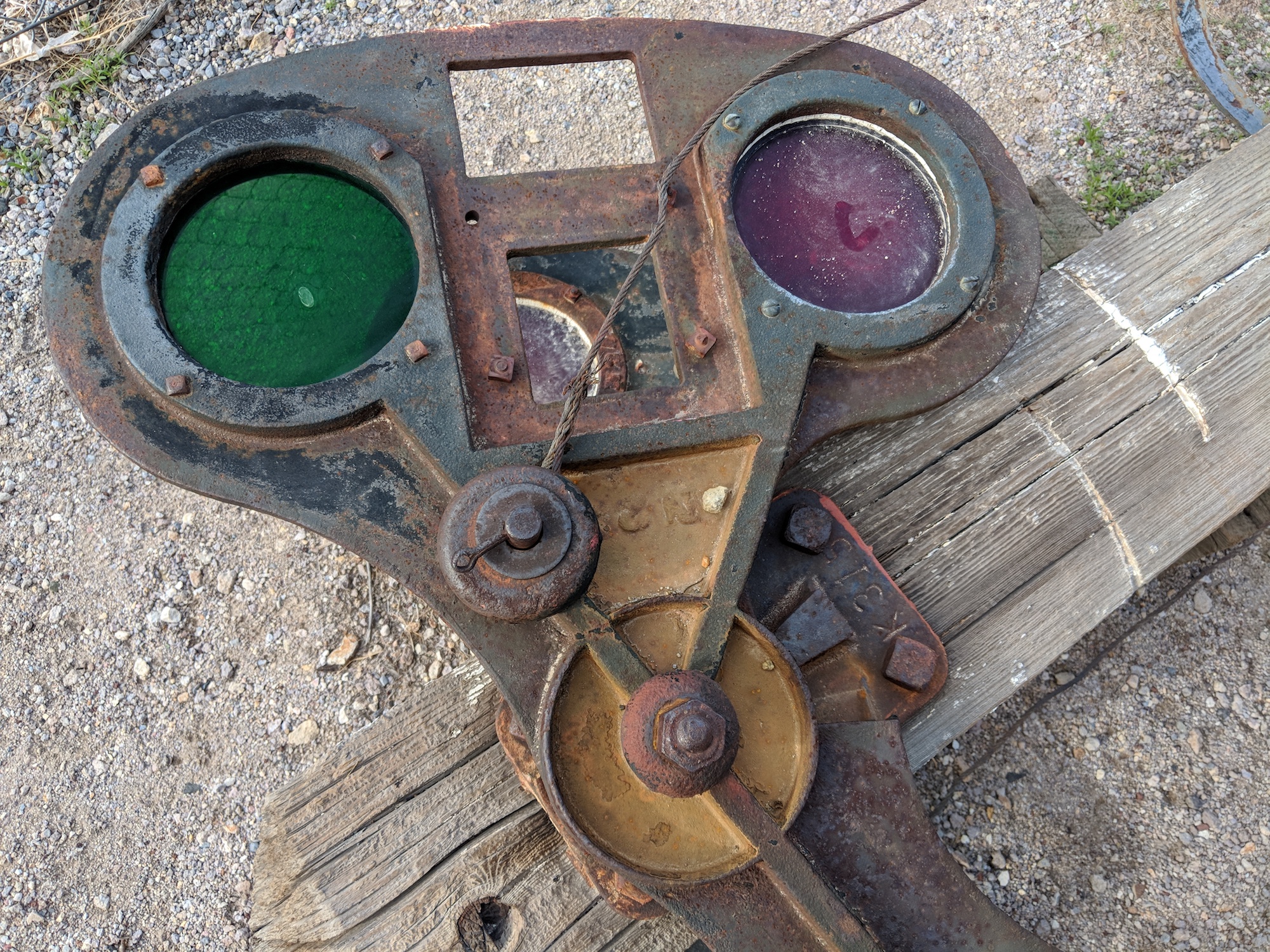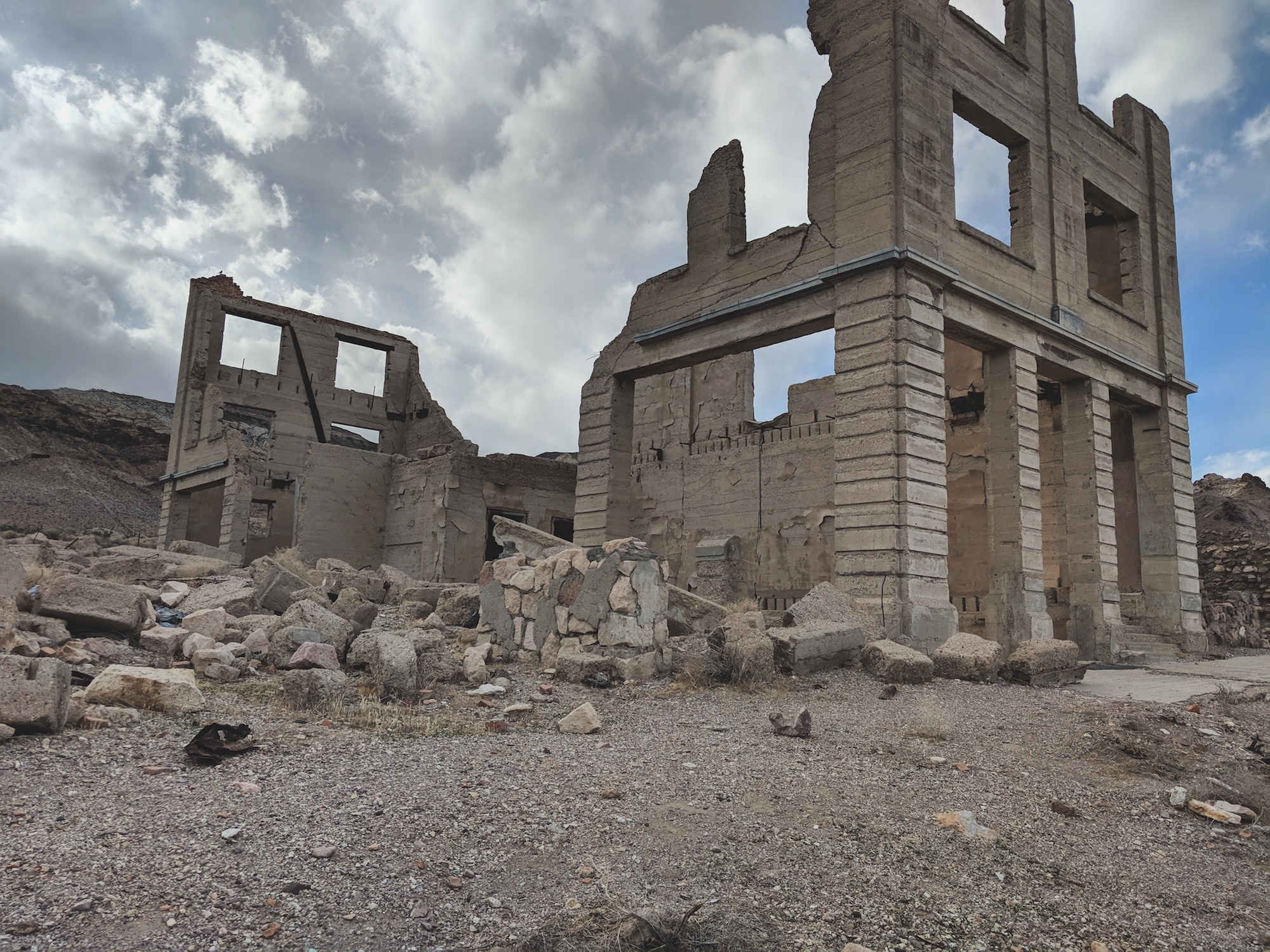 I have planned to visit rhyolite for several years, but. unfortunately, it was always too far from the routes I made. This time ghost towns were my focus, so one of the first ones I added to the trip list was Rhyolite.
I have planned to visit rhyolite for several years, but. unfortunately, it was always too far from the routes I made. This time ghost towns were my focus, so one of the first ones I added to the trip list was Rhyolite.
And I was not disappointed. Of course, this one is more touristy that many others, but you still have a lot to explore while not meeting crowds of tourists.
Rhyolite is located several miles from Beatty near the eastern border of Death Valley park. It is not as isolated as some other ghost towns I visited and attracts a lot of tourists attention. But still it not as commercialized as Calico and, fortunately, there are no shops or other businesses.
The town is named for rhyolite, an igneous rock composed of light-colored silicates, usually buff to pink and occasionally light gray.
Rhyolite history
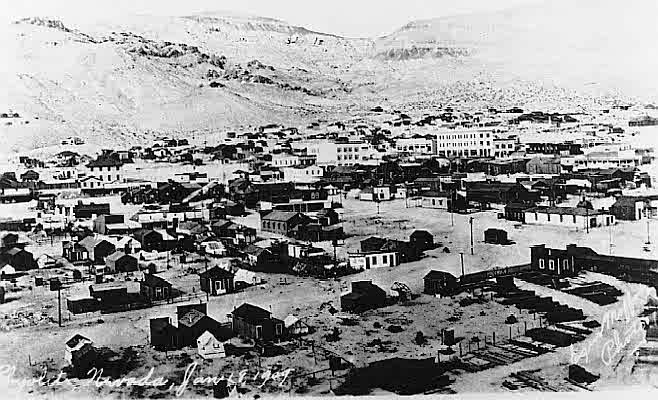
Rhyolite - January 18, 1909 (3)
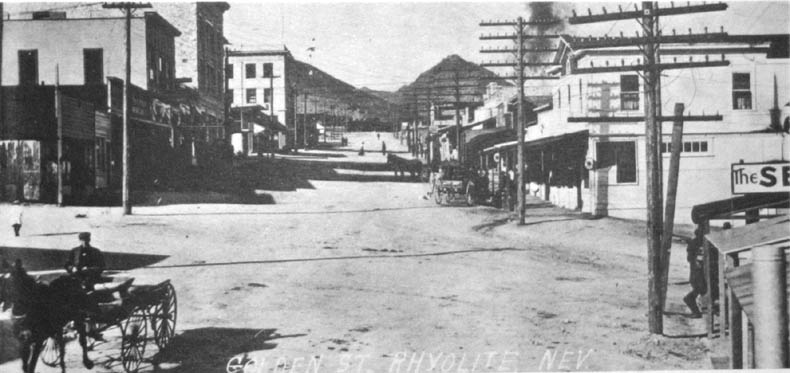
Looking up Golden Street and the center of town, 1908. (3)
Town began it’s history in 1950 after prospectors discovered some promising sights in the nearby hills. Settlement attracted a lot of gold-seekers during the gold rush years, as it was close to the region’s biggest producer - Montgomery Shoshone Mine. This mine was very technical advanced for the time and had piped water, electric lines and railroad transportation, that served the town as well as the mine. The railroad station is still in the great shape. By 1907, Rhyolite had electric lights, water mains, telephones, newspapers, a hospital, a school, an opera house, and a stock exchange. Published estimates of the town’s peak population vary widely, but scholarly sources generally place it in a range between 3,500 and 5,000 in 1907–08 (1).
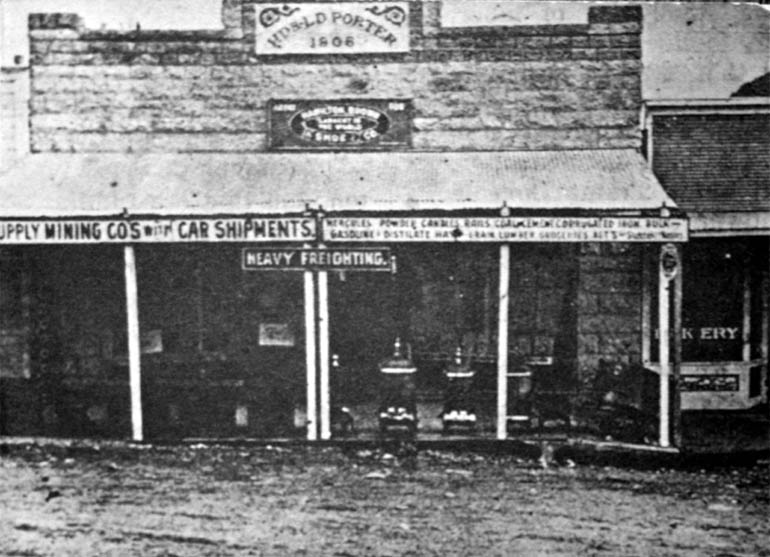
The H.D. & L.D. Porter Store at its best. It was built in 1906. (3)
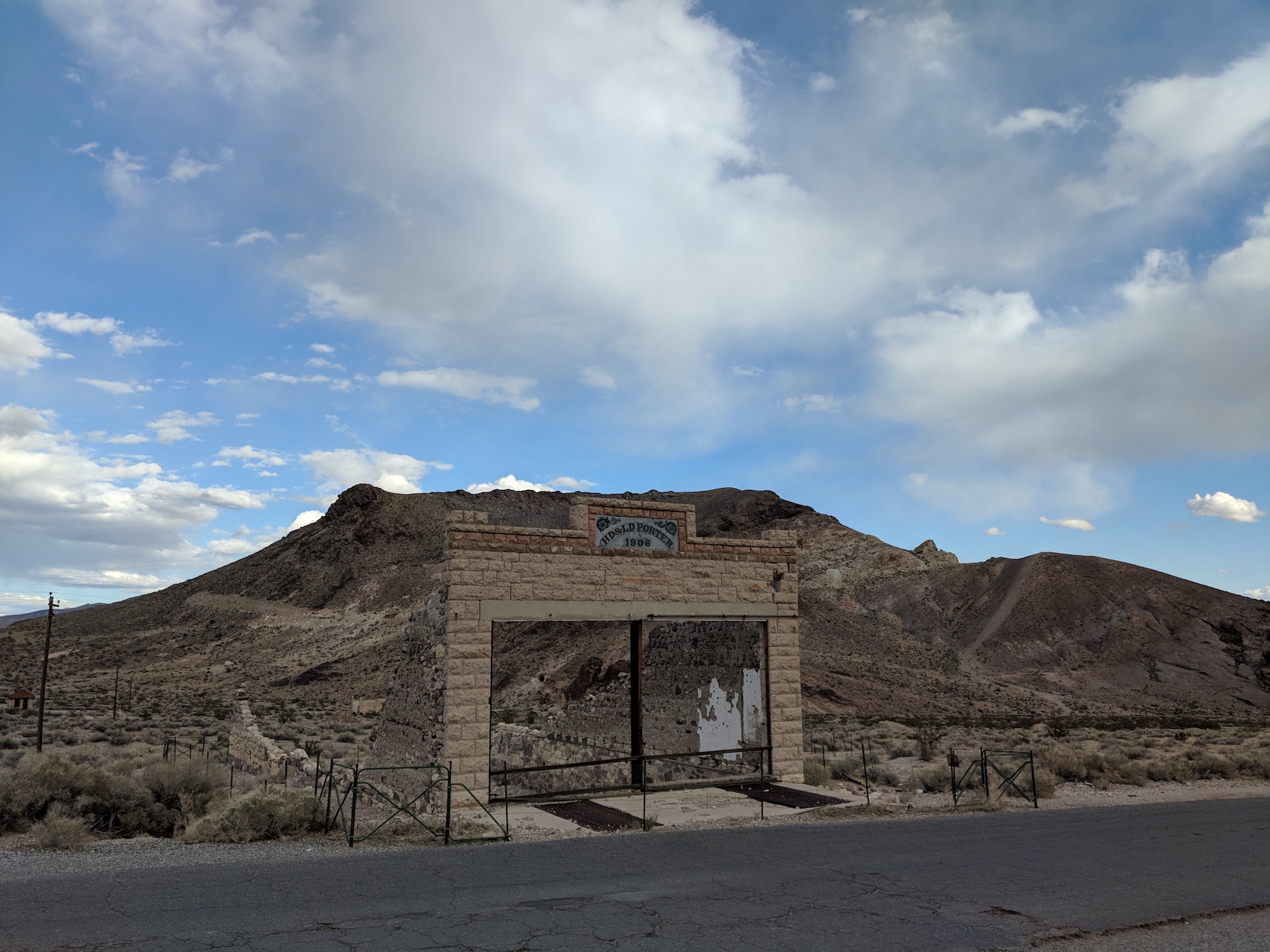
Remains of H.D. & L.D. Porter Store, 2018
Unfortunately, good days were short for Rhyolite, so it started declining fast after the most rich ore was exhausted in the mine. In 1908 mine was reevaluated by independent inspection that proved that it was overestimated initially. So finding new investors became very difficult. For some time it was working at a loss and was closed in 1911. By 1920 town hardly had any people left.
I can’t even imagine how drastic and fast the decline was. Just imagine - all three banks in the town closed by March 1910. The newspapers all shut down by June 1912. The post office closed in November 1913; the last train left Rhyolite Station in July 1914, and the Nevada-California Power Company turned off the electricity and removed its lines in 1916.
As many other abandoned towns in the area it’s buildings became the source of the building materials for the surrounding camps. Several buildings were completely moved to Beatty.
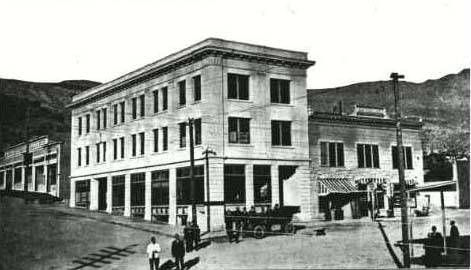
The Cook Bank as it looked around 1910, (3)

Ruins of Cook Bank today
It explains to me why the remains of the buildings are in such a bad shape. Banks buildings looked like there were much older than the beginning of the 20th century - no roof, just remains of the walls and no bricks from the walls near the ruins. Probably they were taken to build other constructions in the nearby towns.
Views of the town in 2018:
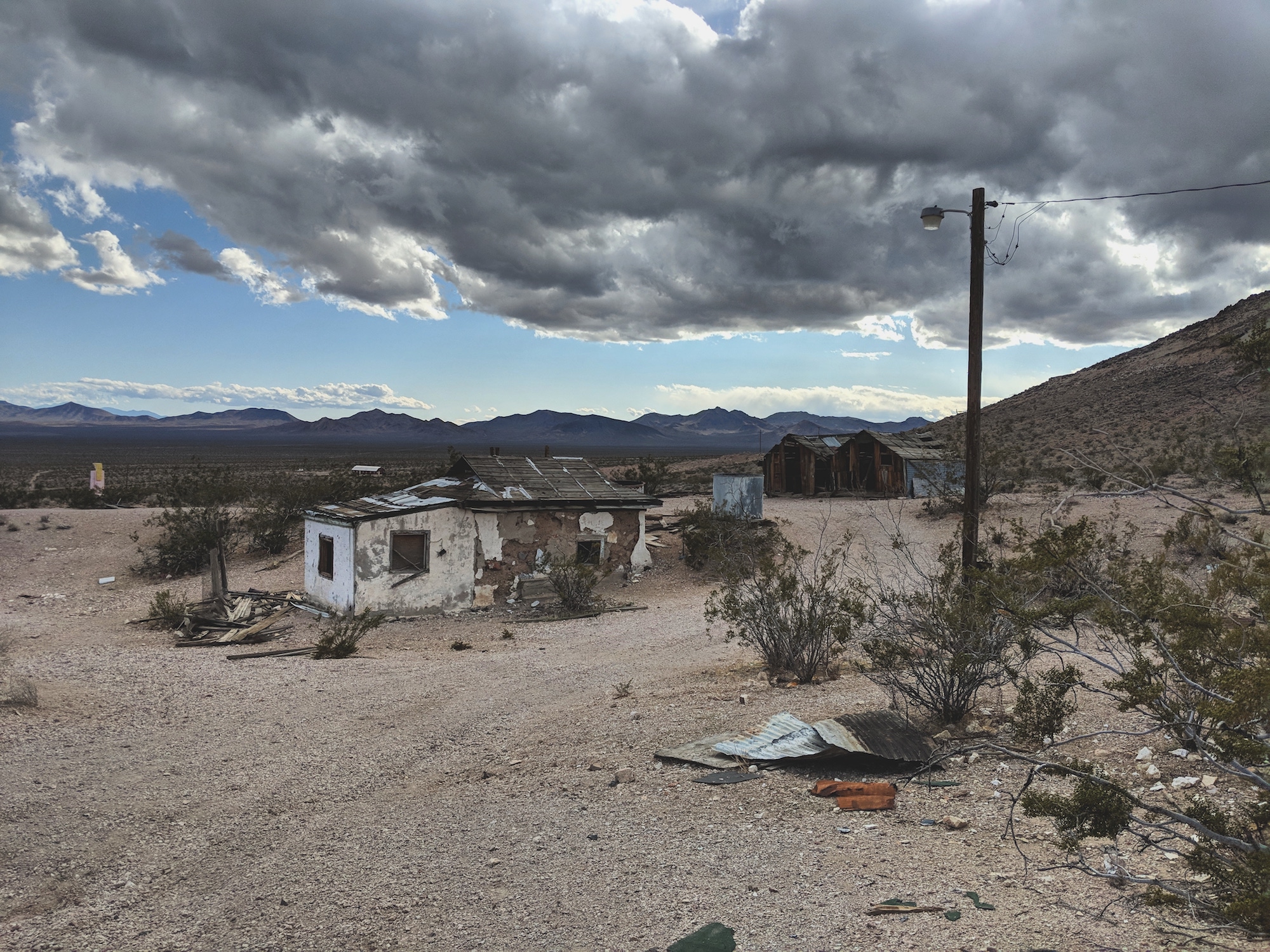
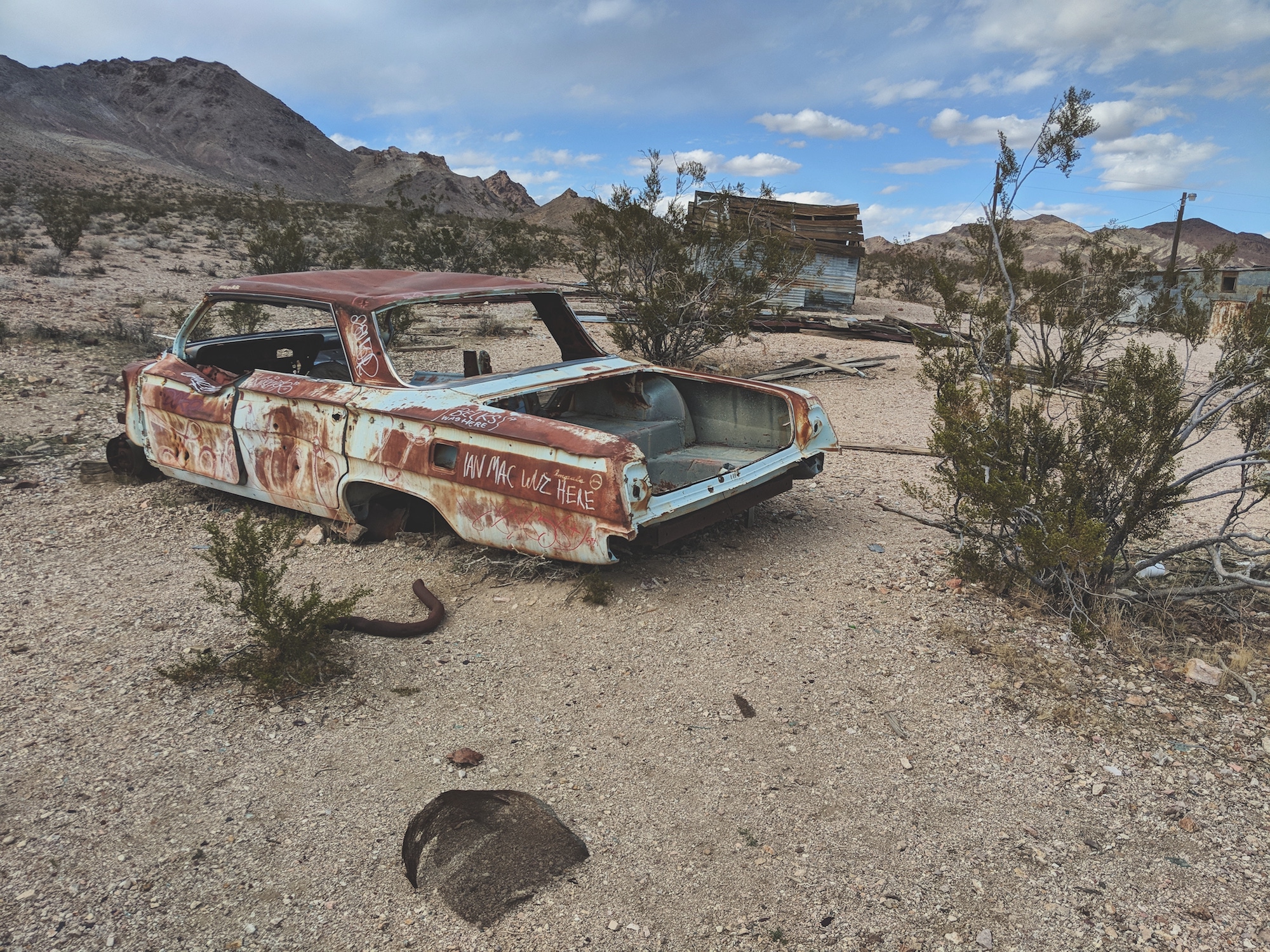
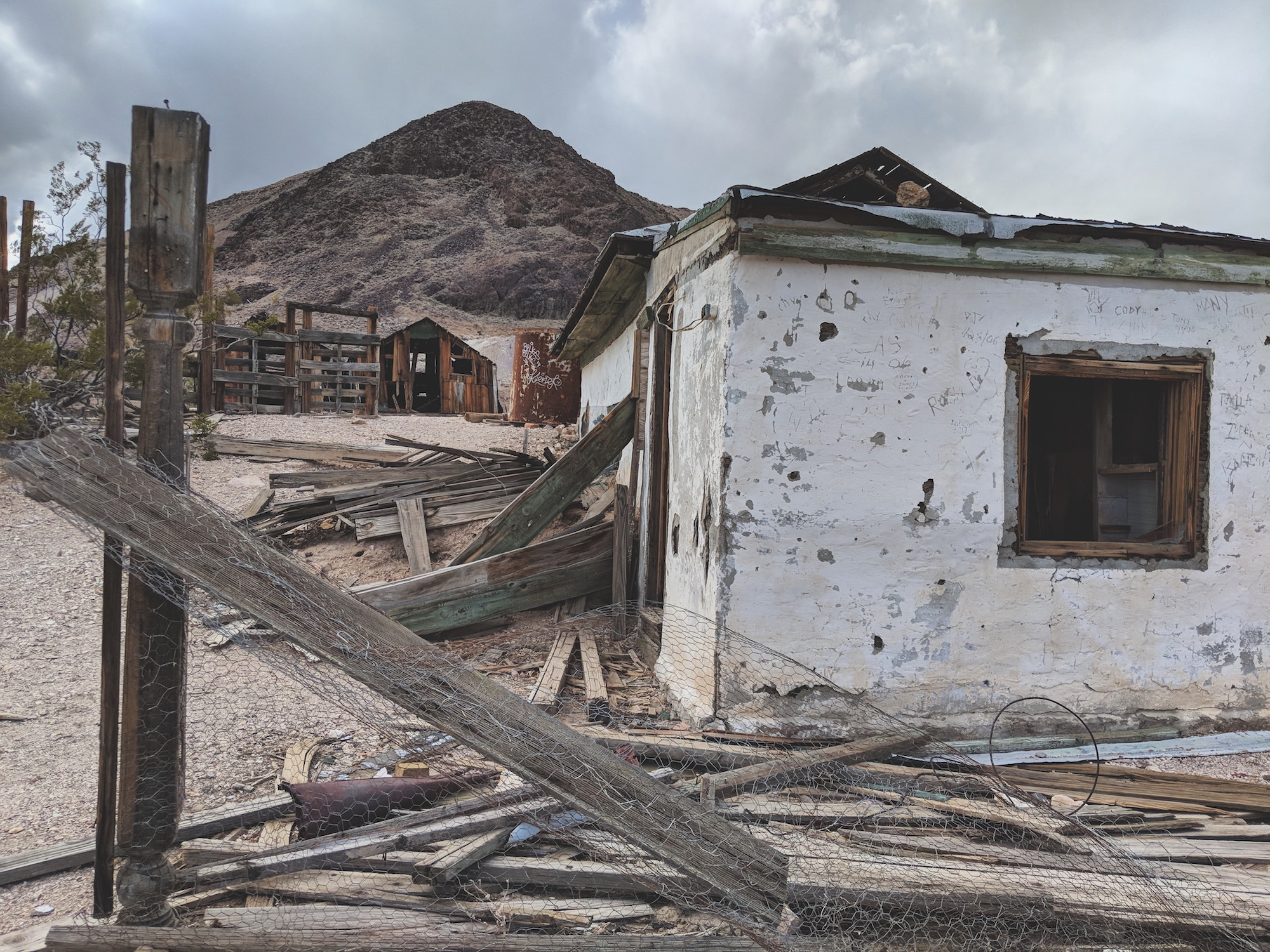
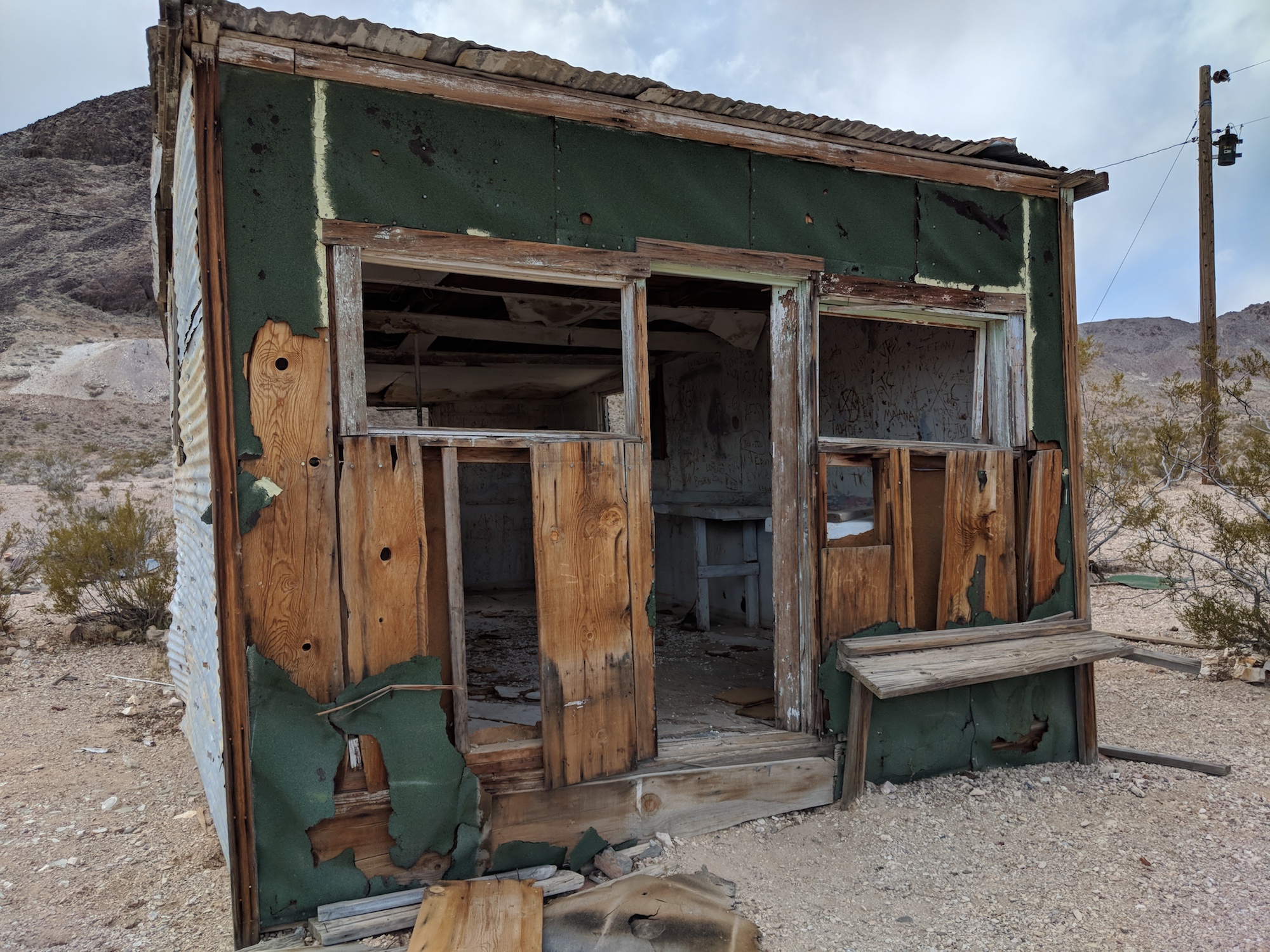
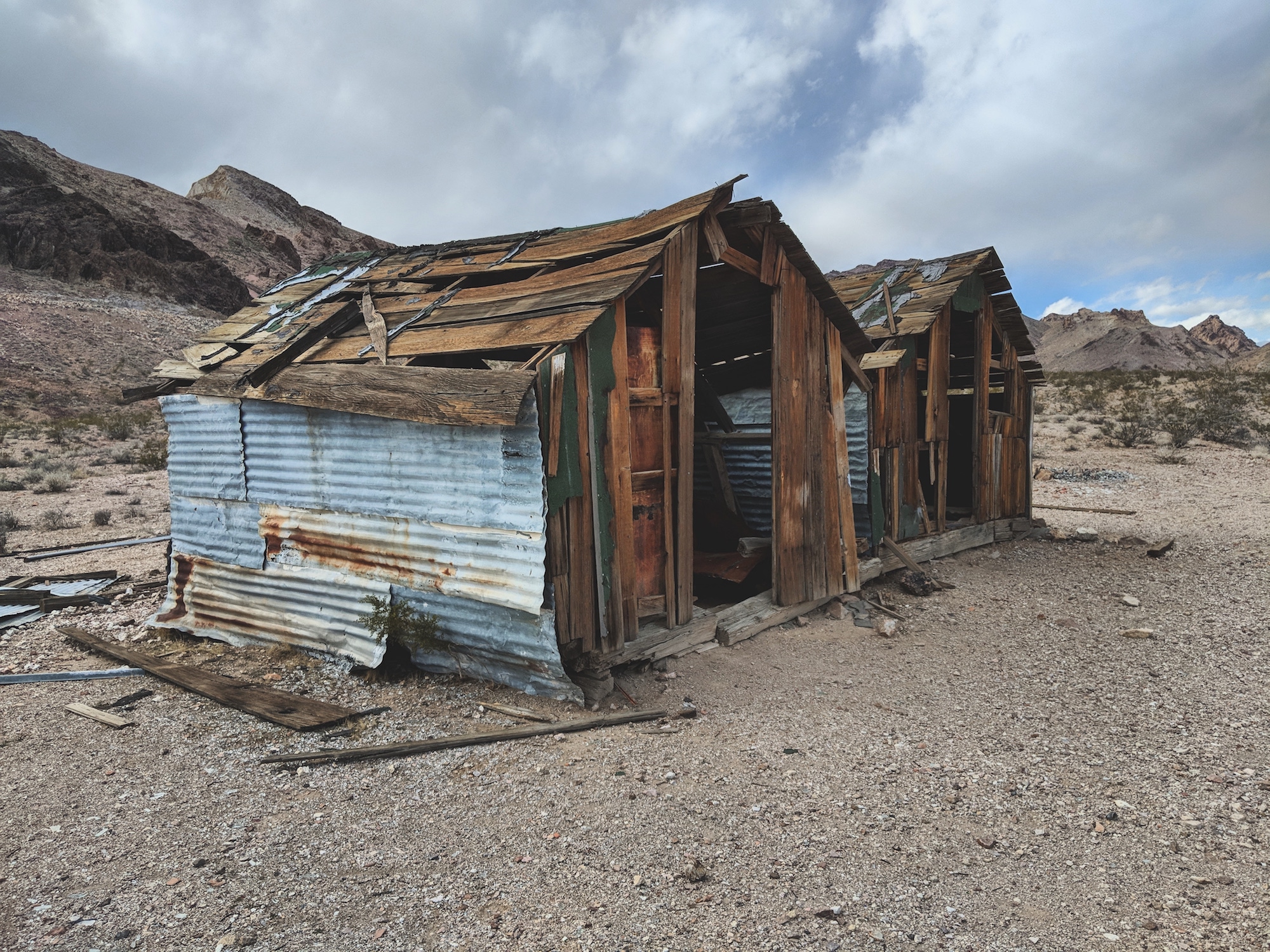
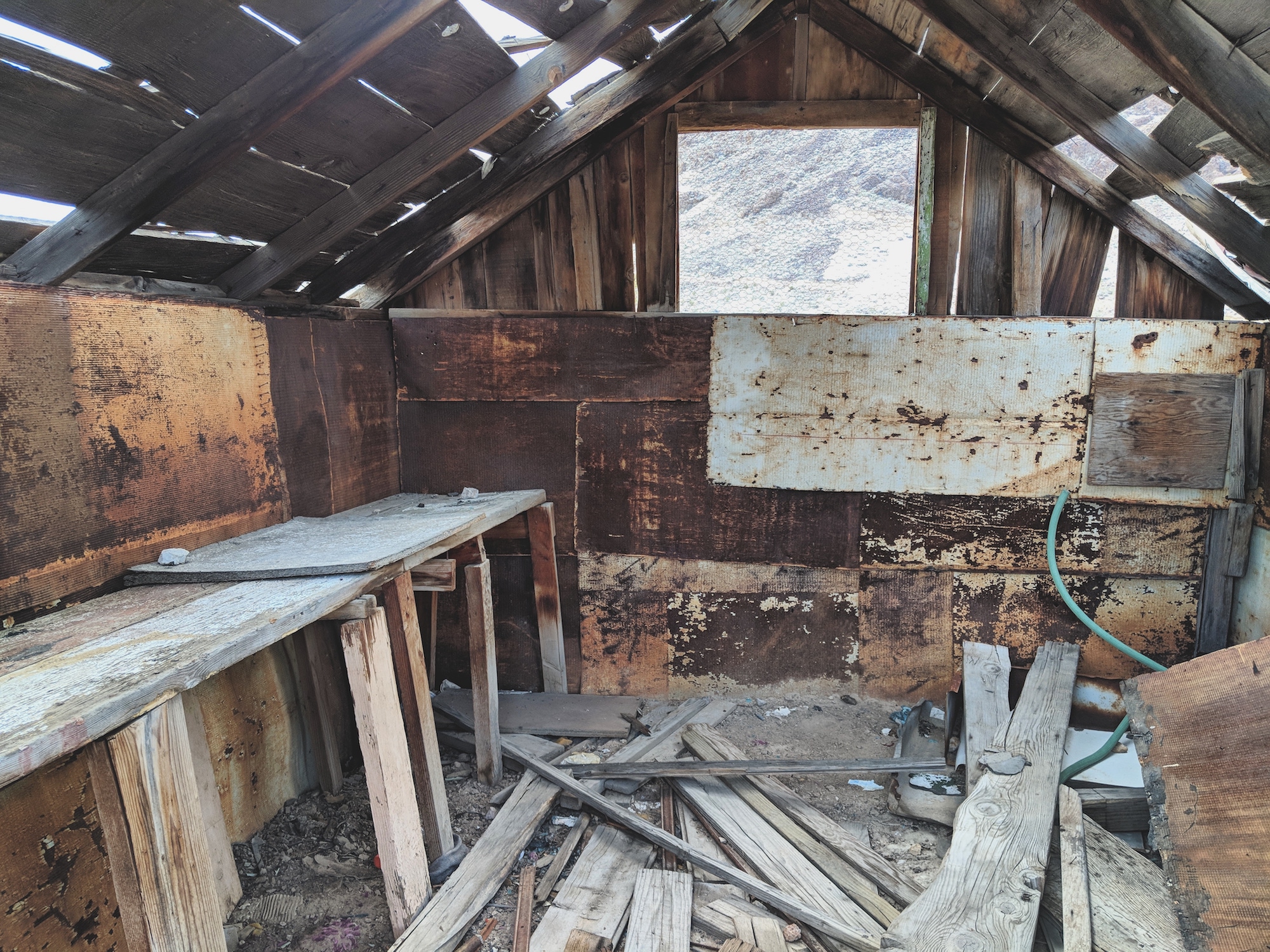
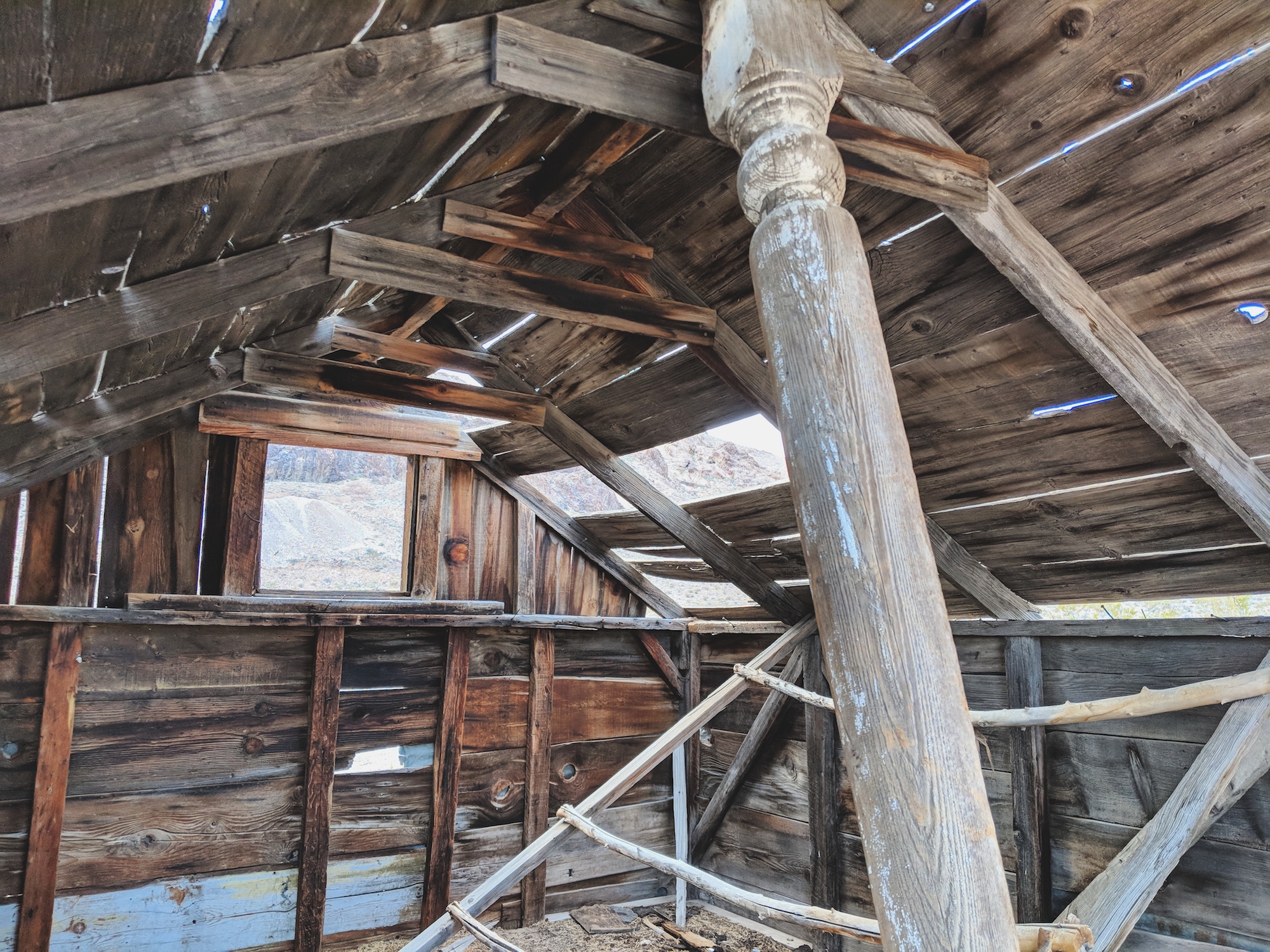
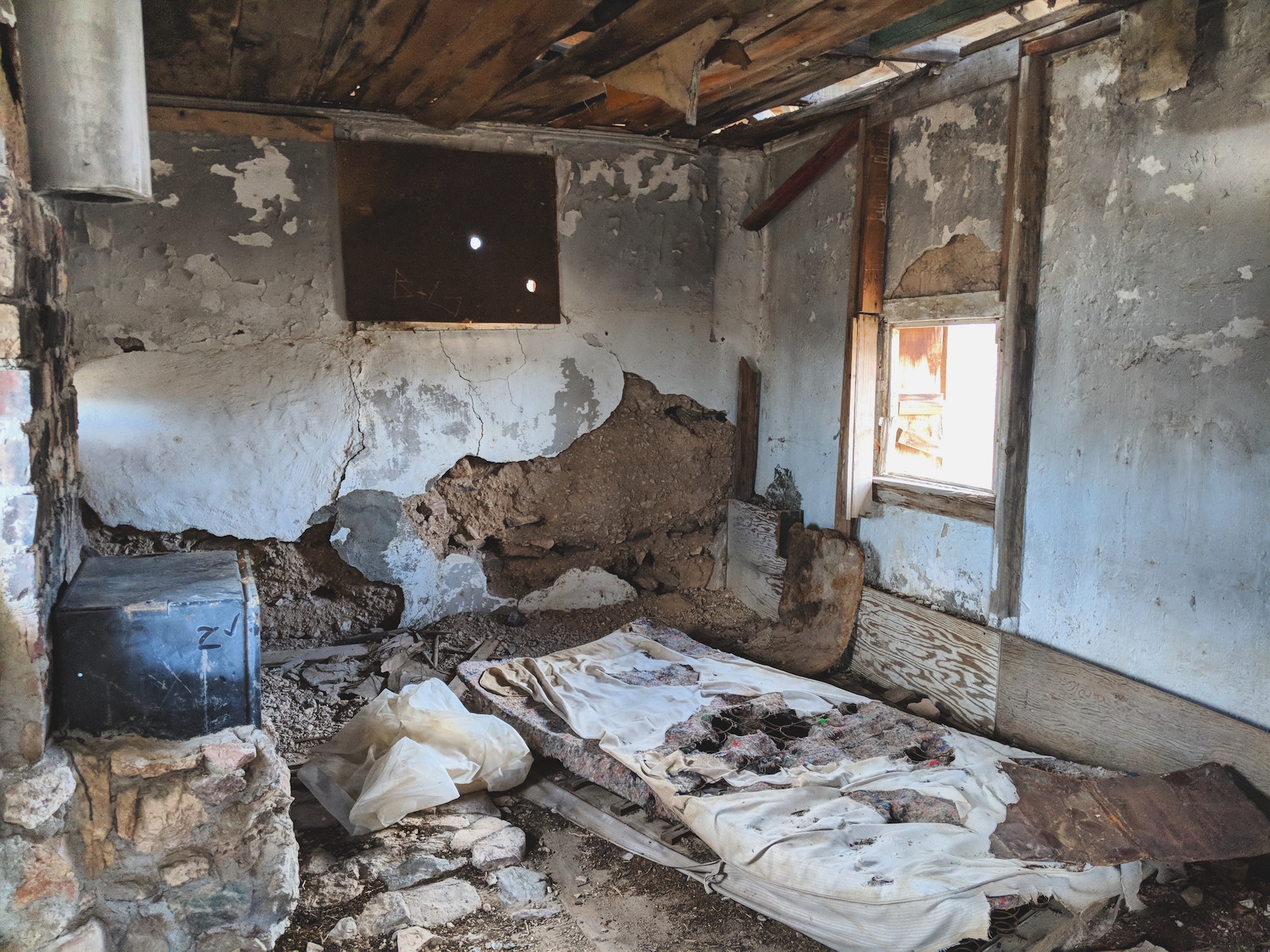

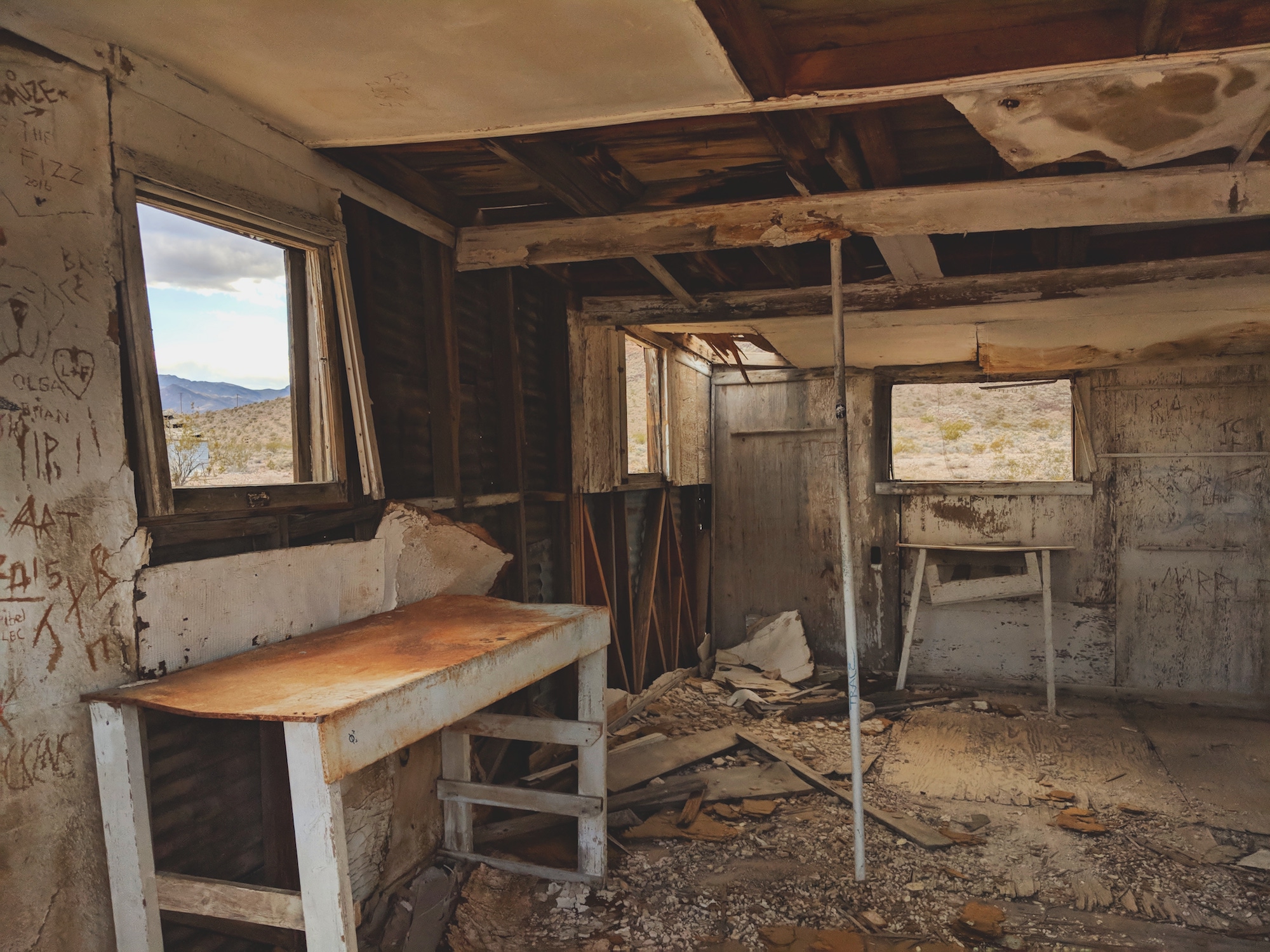
The Bottle House
In the front part of the town you will find a very interesting building with walls made completely out of bottles and some cement. Australian Tom Kelly built his Rhyolite bottle house in 1905 or 1906.
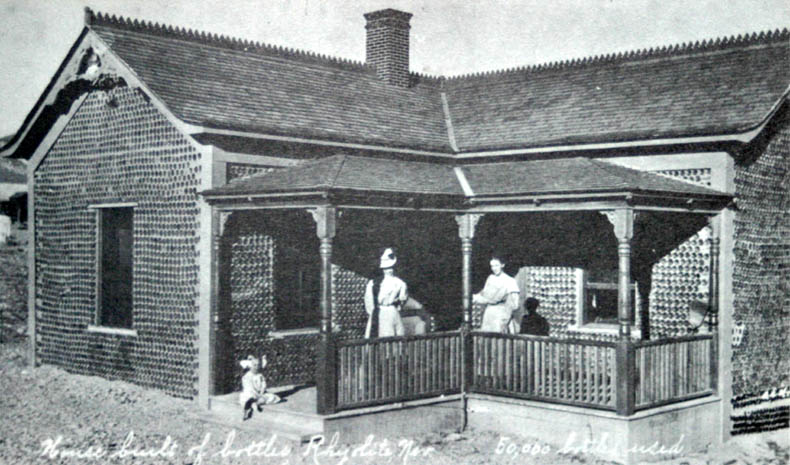
Bottle House in 1925 (3)
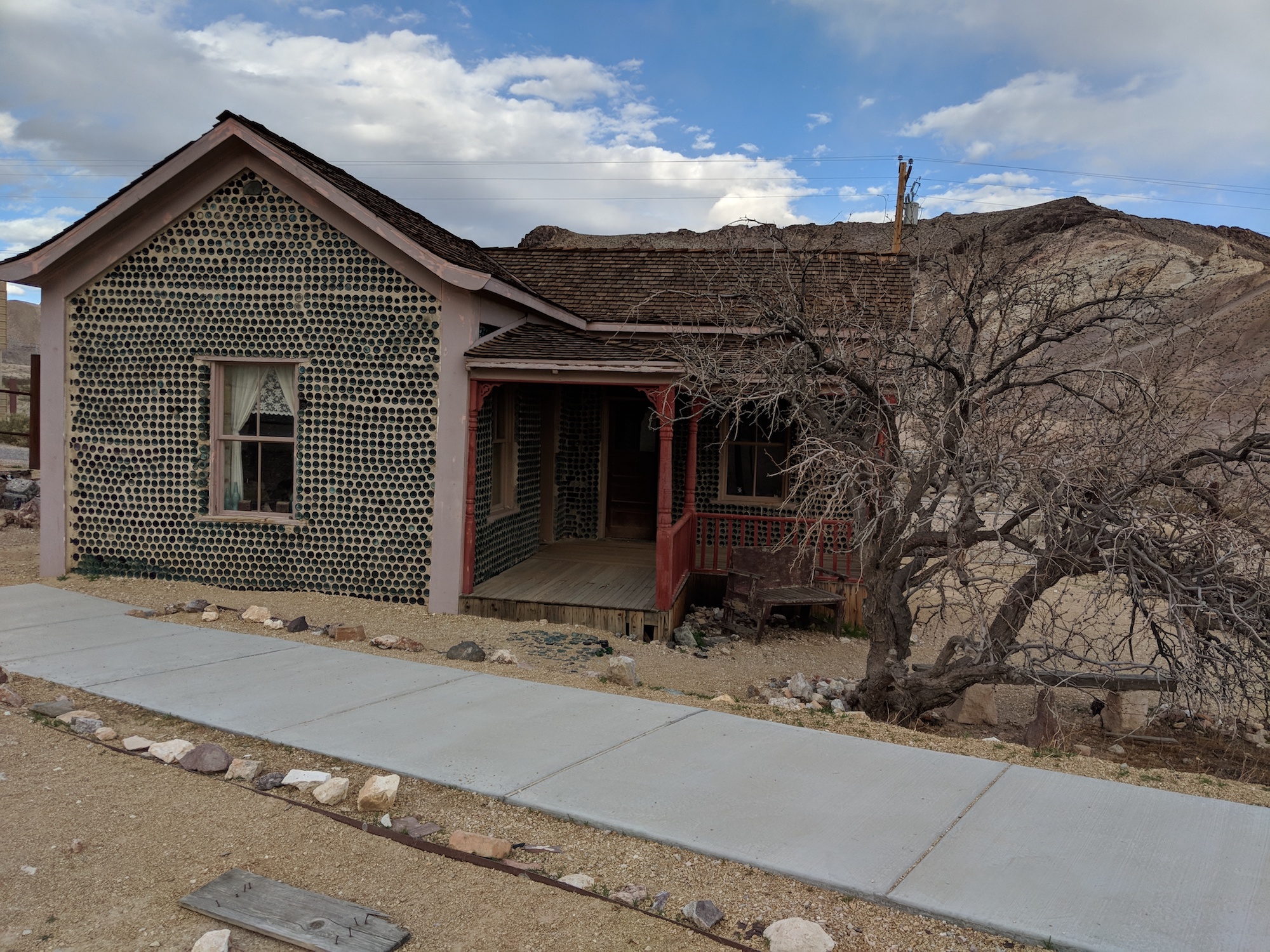
Bottle house in 2018
The bottle building was restored and re-roofed by Paramount Pictures in 1925 for a movie setting, then given to the Beatty Improvement Association for maintenance as a historical site. In 1936, N.C. Westmoreland rescued the depot and converted it into a casino and museum. His sister H.H. Heisler maintained it later as a museum and curio shop. Today, it is closed and stands on private property. (2)
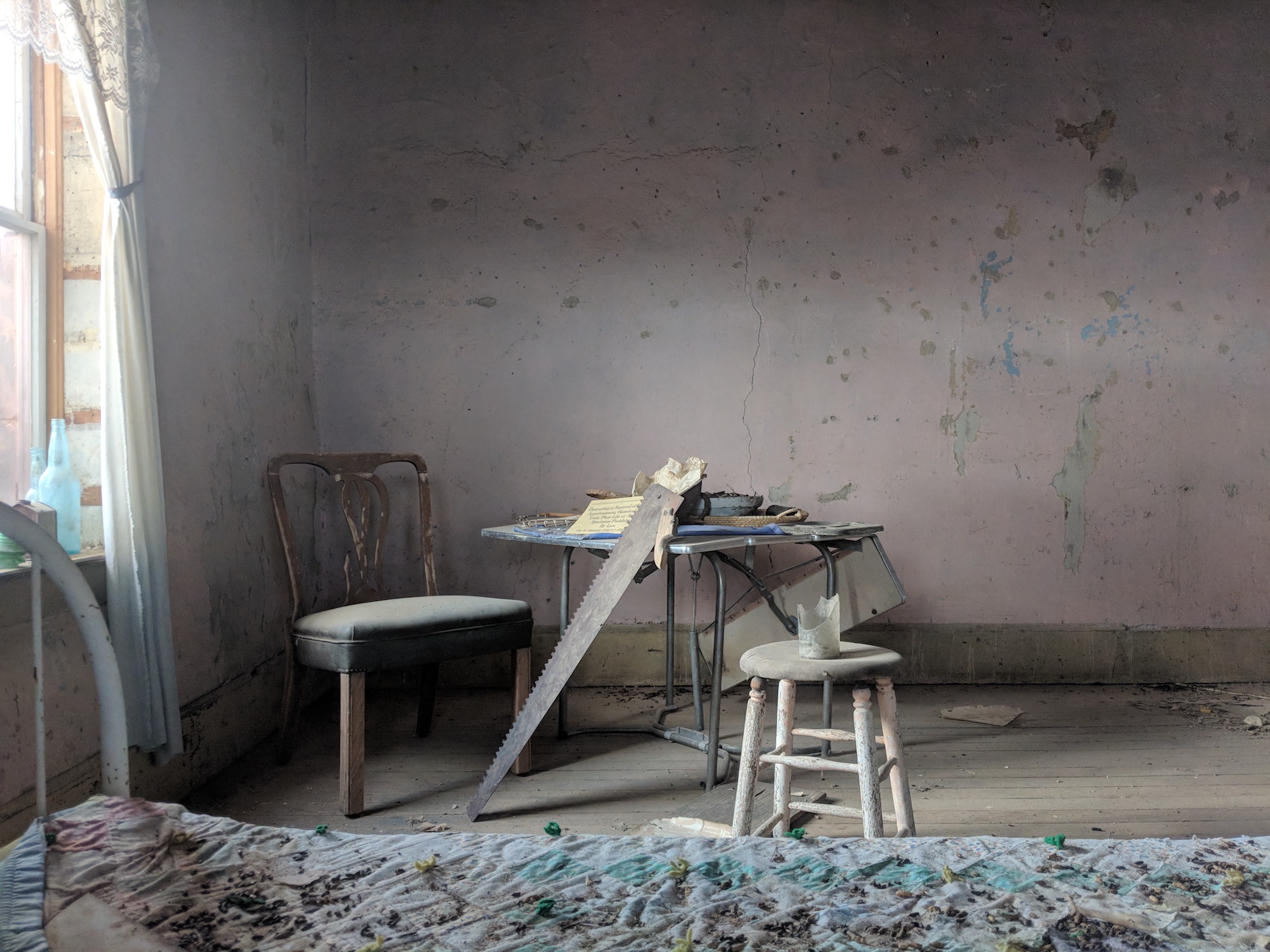
Inside Bottle house
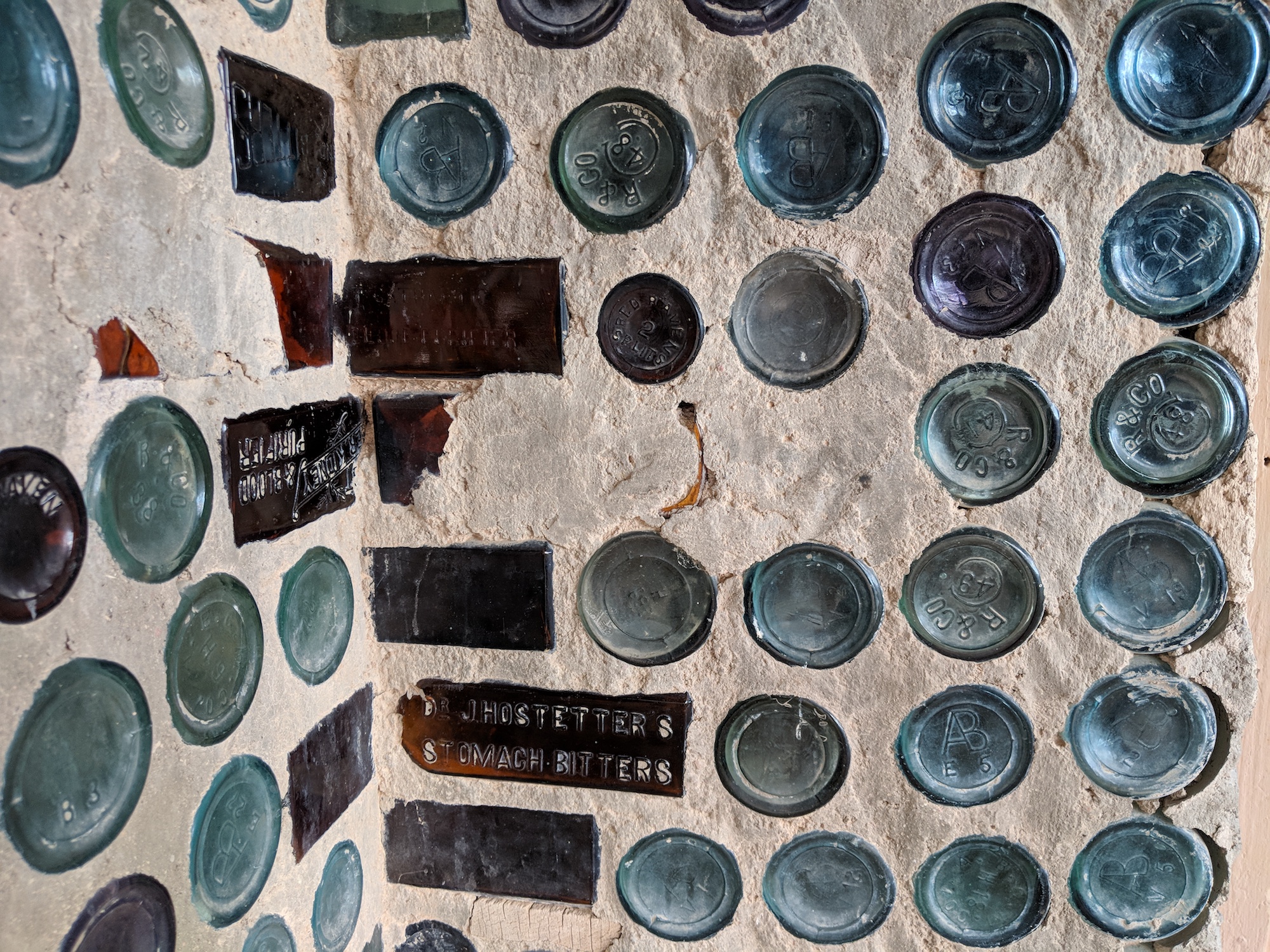
Closer view on the wall
Rhyolite's former train station
One of the most interesting buildings in Rhyolite is it’s railroad station. It was a part of the LA and Tonopah Railroad which began running regular trains to the city on December 14, 1906. It’s a nice built in California-mission style building that was expensive for that time to construct.
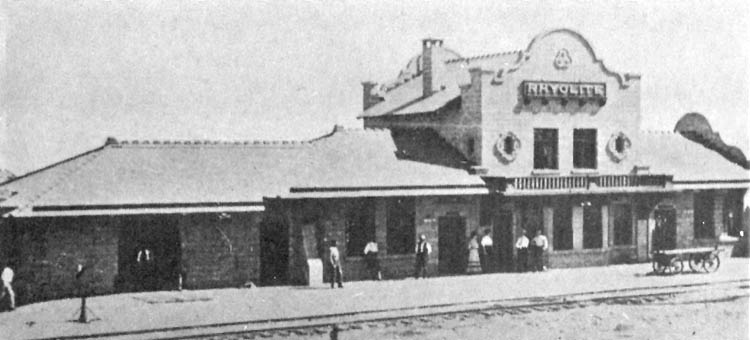
Train station in 1908 (3)
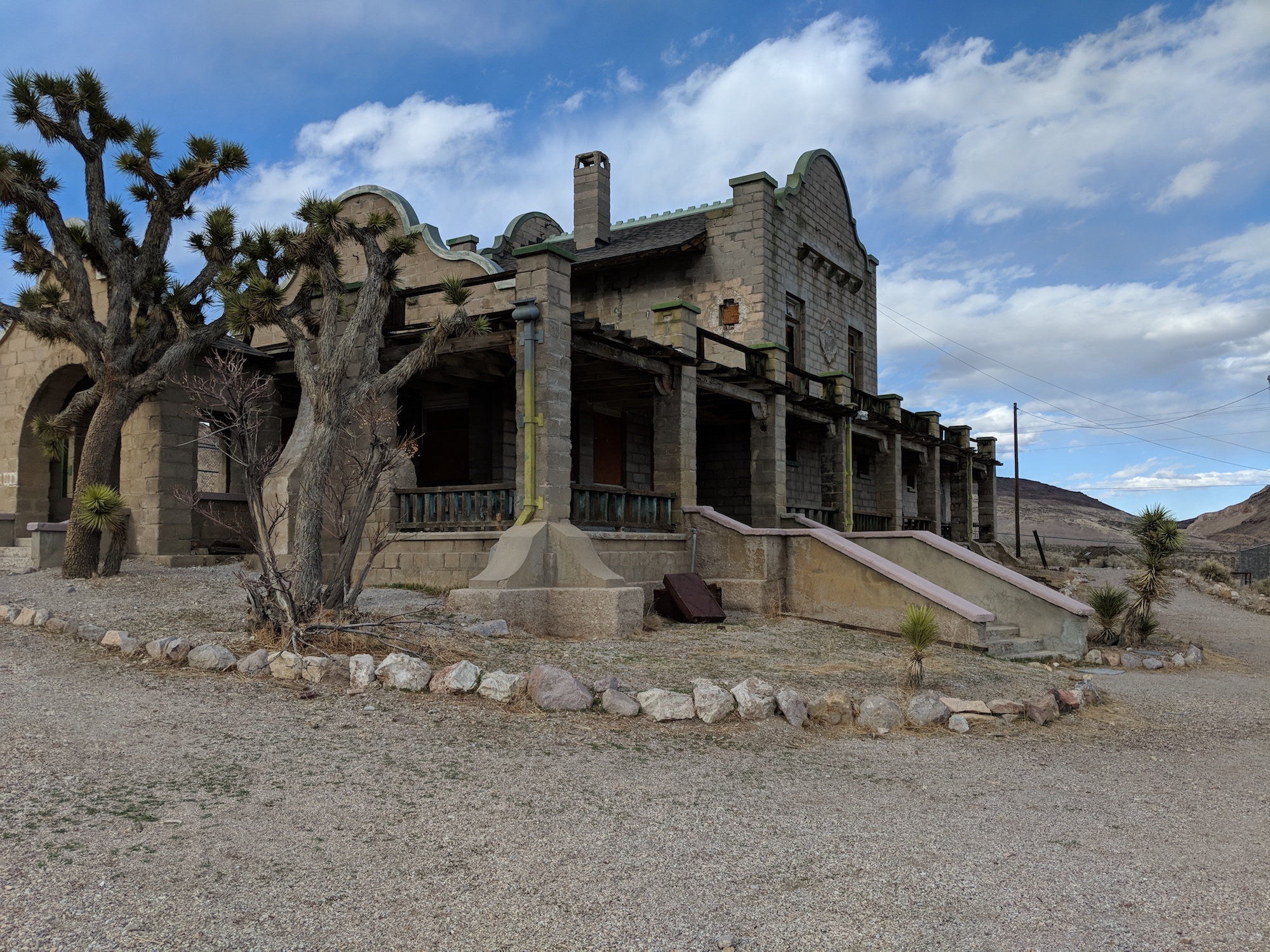
Train station in 2018
At one time, three different railroad companies came into Rhyolite, but, as town started dying less and less trains came to the depot. The last train left Rhyolite Station in July 1914. Now you can’t even see the train rails left - probably the metal was used for smth by the locals after the town was abandoned.
In the 1930s the old station became a casino and bar, and later it became a small museum and souvenir shop that stayed open into the 1970s.
